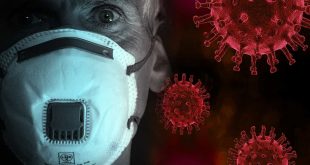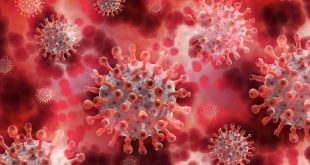Almost half of Canada’s COVID-19 cases are caused by spread in the community from an unknown source, and experts say that signals there could be a silent epidemic happening across the country.
Almost half of Canada’s COVID-19 cases are caused by spread in the community from an unknown source, and experts say that signals there could be a silent epidemic happening across the country.
Of the 1,044 cases that the Public Health Agency of Canada has provided epidemiological data on as of Monday, 48 per cent are a result of infection from community transmission, while 42 per cent are tied to travel and seven per cent are linked to close contact with a traveller who tested positive.
Community transmission is the spread of an illness with no known link to travel or previously confirmed cases, which suggests a growing number of cases are likely going unreported across the country.
“It’s about 50 per cent of travellers versus those who are acquiring it in the community,” Dr. Theresa Tam, Canada’s chief public health officer, said Tuesday.
“That is a fundamental shift in our epidemiology.”

Jason Kindrachuk, an assistant professor of viral pathogenesis at the University of Manitoba and Canada Research Chair of emerging viruses, said that shift makes it more difficult to slow the spread of the coronavirus in Canada.
“If a virus is now spreading in the community, what that means is that we don’t have a really good ability to be able to monitor where that virus is, who it’s going to and who that person has contacted,” he said.
“You don’t know where the virus is at any particular moment in time, and now what you have is basically the potential for that person to pass it on to a much larger group of people.”
Kindrachuk said community transmission is particularly challenging because the virus doesn’t produce symptoms in everyone it infects.
“They’re not maybe being monitored through self-isolation or health officials don’t know that that person is infected,” he said. “So it creates a much broader concern very, very quickly for us in terms of the transmission of this virus.”
Given the available data from the federal government only covers about half the number of confirmed or presumptive cases in Canada as of Monday, experts say it will be some time before we know the true picture of how widespread community transmission is in Canada.
“It could be more or less than that. It’s probably more,” said Dr. Andrew Morris, a professor in the department of medicine at the University of Toronto who studies infectious diseases.
WATCH | How social distancing can make a difference in stopping spread of COVID-19.
Social distancing measures like working from home, school closures and cancelling sporting events could lead to a drop of new infections of coronavirus. 1:54
“In Ontario, there have been challenges with testing as many people as possible. And because patients are being told when they’re unwell, but not very unwell, to just stay away and not get tested, it drops our numbers substantially.”
While Ontario’s assessment centres have been conducting roughly 3,000 swab tests per day, the province’s labs are currently producing only 2,000 to 2,100 test results each day.
Morris said he expects levels of community transmission to rise in Canada, in part because cases in the community with mild symptoms are not being treated and are not being added to the total.
“Because borders have closed over time, we’re going to see almost no cases related to travel,” he said. “Almost all cases will be community acquired.”
Social distancing key to stopping community spread
In an effort to stop the spread, Tam and other public health officials continue to urge healthy Canadians to stay at home, wash their hands frequently and keep two metres apart from others when venturing outside.
Morris said that given what we know from other countries about how the virus spreads, Canada needs to take an “aggressive approach” when it comes to social distancing to curb community transmission.
“The people who can take care of most of the cases are the people at home,” he said.
“If everyone just does their best to maintain their distance from everyone else, and stop meeting anyone outside of your household, then that should do the job.”
Kindrachuk said that while there are severe cases of COVID-19, the “vast majority” of infected people experience mild or moderate respiratory symptoms and can even spread the virus before developing symptoms.
“For every one case we identify, there are probably quite a few other cases that have not been identified and that are able to transmit virus readily in our communities,” he said.

He said the rising rate of community transmission has moved Canada into a “new phase” and that now is the time for Canadians to take social distancing seriously.
“I think we still have a chance in Canada right now to try and curb transmission as much as possible because cases are not growing exponentially across the country,” he said.
“But we are kind of getting close to that precipice where the window is closing for us to really try and tamper down the transmission…. We all need to kind of play our part in that as much as possible.”
Dr. Srinivas Murthy, an infectious disease specialist and clinical associate professor in pediatrics at the University of British Columbia, said social distancing is particularly important for the minority of people with few symptoms who never get diagnosed.
“If you can envision a world where we all stay in the same place, six feet away from everybody else for the next 14 days, then the virus would die itself out,” Murthy said. “The outbreak would end.”
 The Argus Report Read about it!
The Argus Report Read about it!




